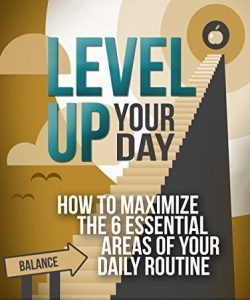Maximize Your Day: Use Your 24 Hours Effectively for Success and Balance
Have you ever set a goal — maybe to improve your grades, become more confident, or participate in more school activities — but struggled to follow through?
In our previous blog, https://srikrishinternationalschool.com/goal-setting-for-a-successful-school-year-tips-for-students-parents-teachers/ , we explored how students, parents, and teachers can work together to create meaningful, achievable goals. But here’s the truth: even the best goals won’t work without a plan for your time.
Goals give you direction. Time management gives you momentum.
That’s why learning how to use your 24 hours wisely is the next essential step.
Many students feel overwhelmed not because they don’t have enough time, but because their time is unorganized or wasted on low-value tasks. In fact, studies show that only about 3 productive hours happen in a typical day for most people.
This blog will help you discover:
- How to track and understand where your time goes
- How to create a daily plan that supports your goals
- How to stay focused, energized, and balanced
- How to beat distractions and procrastination
- And how to reflect on your current habits
If your goals are the destination, managing your 24 hours is the vehicle that will get you there.

Step 1: Understand Where Your Time Goes
Before changing how you spend your day, you need to see the reality of it.
Start by tracking your time for two days. You can use a notebook or apps like Toggl. Write down everything — from scrolling Instagram to doing assignments to daydreaming.
Reflection: What activities took up the most time? Were they intentional or just habits?
Once you know where your time is going, compare it with what you want to be doing. Ask yourself:
- Are these activities helping me reach my goals?
- Do they energize or drain me?
A helpful way to sort your tasks is the Eisenhower Matrix, which separates what’s important vs. what’s urgent. Many of us spend hours reacting to what feels urgent (like emails or chats) but forget to work on what truly matters (like your project or personal growth).
Next, identify your biggest time-wasters. Social media, multitasking, and random web surfing may feel harmless, but they silently rob you of hours every week.
Action Prompt: List your top 3 distractions. What’s one way you can limit each this week?
Step 2: Plan Your Day with Intention
A great day doesn’t happen by accident — it’s planned.
One of the most powerful tools for managing your day is time blocking. This means assigning specific hours for specific activities — like studying, eating, relaxing, and even socializing. Group similar tasks together (batching) to avoid switching focus too often.
Here’s an example on Sunday:
| Time | Task |
| 8:00–9:00 AM | Morning routine + Journaling |
| 9:00–11:00 AM | Study / Deep Work |
| 11:00–11:30 AM | Break |
| 11:30–1:00 PM | Assignments or Group Work |
Try This: Block out your ideal weekday using 4–5 main time blocks.
To stay on track, use digital tools like Todoist, Notion, or Google Calendar. These apps help you prioritize tasks, set reminders, and keep everything in one place. Physical planners are great too — choose what works for you.
But a plan only works if you protect it. That means saying no to things that don’t align with your goals. Don’t let others constantly interrupt your focus time.
Practice: Pick one “deep work” period per day. Turn off notifications. Tell friends or roommates not to disturb you during this time.
Step 3: Enhancing Focus and Productivity
It’s not just how you manage your time — it’s also how you manage your attention and energy.
Use techniques like the Pomodoro Technique: 25 minutes of focused work, then a 5-minute break. This helps prevent burnout and keeps your mind sharp.
Challenge: Try two Pomodoro sessions today. How did you feel afterward?
You’ll also focus better when your body is fueled properly. That means getting enough sleep (7–8 hours), staying hydrated, eating brain-boosting snacks, and moving your body.
Knowing your peak hours — the time of day when you feel most alert — can also make a huge difference. If you’re a morning person, do hard tasks early. If your brain wakes up at night, use those hours wisely.
Quick Check-In: What time of day are you most focused? How can you use that time more effectively?
Step 4: Cultivating Habits for Long-Term Success
Success is not about motivation — it’s about habits.
A simple morning routine (like journaling or stretching) can set the tone for the day. An evening routine (like reviewing your goals or unplugging from screens) tells your brain it’s time to rest.
Try habit stacking: link a new habit to something you already do.
Examples:
- After brushing your teeth → write 1 goal for the day
- After lunch → review your to-do list
- After class → summarize what you learned
Track your progress using a journal or habit-tracking app. And most importantly — celebrate small wins.
Prompt: What’s one small thing you accomplished this week that made you feel proud?
When it comes to procrastination, break large tasks into bite-sized actions. Start with the smallest step. Visualization helps too — imagine the success you’ll feel after finishing the task.
Step 5: Balance Productivity with Well-Being
You weren’t born to be a productivity machine — you need rest, joy, and connection too.
Sleep isn’t optional. It boosts memory, focus, and mood. So schedule rest just like you schedule tasks. Add hobbies, walks, or quiet time to recharge.
Prompt: What’s one screen-free activity you enjoy that helps you relax?
Also, make time for personal development. Read, take a short online course, explore a creative hobby. These small actions build confidence and bring fulfillment.
And don’t forget your relationships. Strong social connections improve emotional health. Call a friend. Share a meal. Laugh more.
Quick Challenge: Message or call someone today just to check in.
Final Step: Complete the Time Effectiveness Self-Audit
Now that you’ve reflected on your habits and explored new strategies, it’s time to assess how well you currently use your 24 hours.
Click the link below to complete a Google Form that will guide you through your current habits, energy use, time wasters, and goals.
Click here to complete your Time Effectiveness Self-Audit
This reflection will help you take the next steps toward a more balanced, productive, and purpose-driven day.
Final Thought
Managing your 24 hours doesn’t mean filling every second with tasks. It means choosing intentionally where your time goes — so you grow, succeed, and still enjoy life along the way.
Start small. Maybe today, you track your time or set your first deep work block. These simple shifts can create powerful change.
Take control of your day — your most focused, balanced self is only a few habits away.









